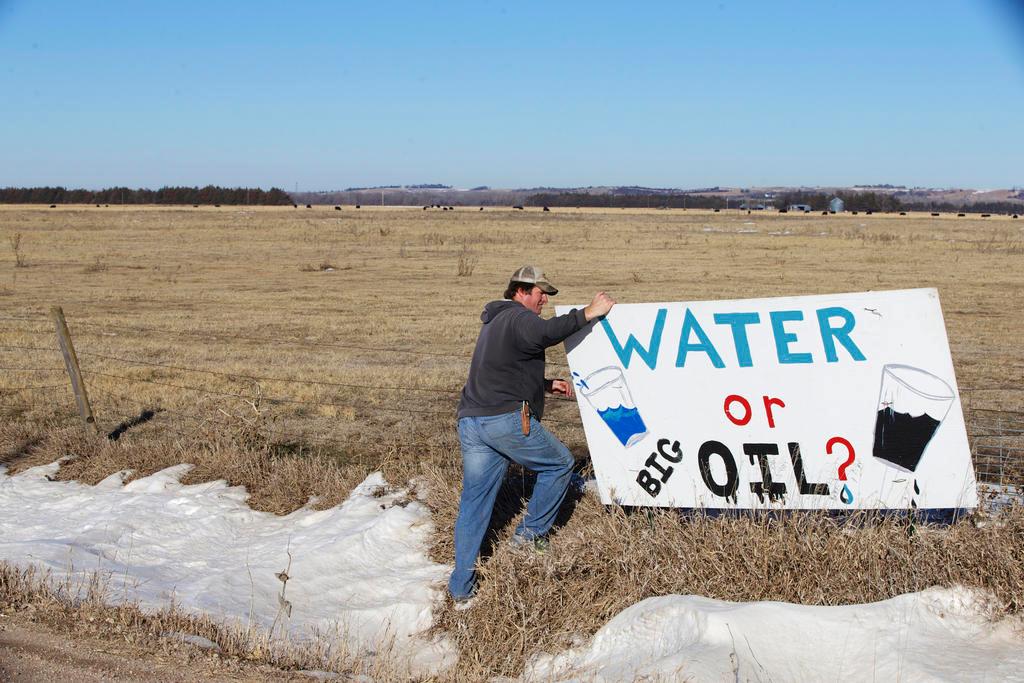US energy debate heats up as Solar Impulse plans trip

In many ways Phoenix, Arizona, would be a natural stop for a high-tech solar airplane like Solar Impulse because the sun influences many aspects of life in the desert city. But temperatures are rising in the state over disagreements on how to manage the growth of solar power.
Phoenix is one of four options for the next Solar Impulse landing. The others are Los Angeles, San Francisco and Vancouver. It would be a repeat visit for the Solar Impulse team, which stopped there while crossing the United States in 2013.
“The opportunity to be able to bring our airplane to the US, to do this flight across America, [is] something we’ve been dreaming about since the beginning of the project,” Solar Impulse’s co-founder André Borschberg told a group of graduating Arizona State University engineering students then.
“Today, more than ever, the world needs pioneers,” his partner and co-founder Bertrand Piccard added. “The world has a lot of challenges to solve: it’s technical and non-technical; it’s about fighting poverty; it’s about human rights; it’s about financial crises; it’s about globalization. But, of course, it is a lot about energy, sustainability, technologies – clean technologies – that the future needs to be a brighter world.”
Arizona’s capital city finds itself at the forefront of renewable energy issues, be they technical or political.
The Arizona Renewable Energy Standard calls for utilities to generate 15% of their overall energy production through renewable sources by 2025. It also advocates for an aggressive push toward distributed generation, like solar panels on rooftops.
Smart energy
Kris Mayes – a former commissioner for Arizona’s utility regulator, the Corporation Commission – co-authored the standard. “The question was: as Arizona grows, how do we want to do it? Do we want to do it in clean, smart, efficient ways? Or do we want to do it the same old way we were doing it before, by turning to coal plants? And we didn’t think that was smart, at the Corporation Commission,” Mayes said.
Phoenix is unique in that is has a nuclear power plant, providing very cheap power, right next door: the Palo Verde Nuclear Generating Station is just 45 miles from downtown Phoenix. But even a nuclear power plant is not enough to satiate a metropolitan area of more than four million people.
“We’ve basically grown out of Palo Verde, and we need additional power sources, and Solana is one of the solutions that we reached for,” Mayes said.
Solana is a massive concentrating solar plant in Gila Bend, Arizona, southwest of Phoenix. Built by Spanish firm Abengoa, Solana cost $2 billion to build, aiming hundreds of thousands of mirrors toward the sun. The desert sun then heats oil, used to create steam, which powers a turbine to create electricity.
Sundown
An added feature of Solana is its storage system: a series of salt tanks can provide up to six hours of thermal power, even when the sun goes down.
In total, the plant provides up to 280 megawatts of power to Arizona Public Service (APS), powering roughly 70,000 homes.
“Solana was the big project in terms of its price tag, originally of course it was $2 billion,” Mayes said. “But we now have some carbon rules coming down from the federal government that make Solana look even more attractive. So now APS and APS’ customers are not going to be hit as hard by those carbon rules that are really aimed at awful generation like coal plants.”
In August 2015, the Obama administration proposed a “Clean Power Plan,” which set carbon reduction targets for states to clean up how they get power. Overall, the plan aims to, by 2030, reduce emissions to 32% below levels seen in 2005.
The plan is a big part of how the US would reach targets set at the UN climate talks in Paris.
But the implementation of the Clean Power Plan is still not a sure thing. Arizona is one of 29 mostly Republican-controlled states and state agencies to question the plan’s legality, arguing the administration has exceeded its powers under present pollution laws.
In February 2016, the US Supreme Court put the plan on hold until the legality question is worked out.

More
US in midst of energy soul-searching
Em-power-ment
While lawmakers continue sparring over the rules governing clean power, the public continues moving toward renewable sources themselves. Big projects likes Solana are impressive in their size, and function, but they are only a piece of the puzzle when it comes to solar power in Arizona and everywhere else.
“The basic idea, from my point of view, of ‘solar’ is distributed generation, definitely. I see that as the opportunity: for every individual to have his own power production on his, whatever it is, in his garden, on his rooftop,” said Daniel Prokopy, a managing partner for Deutsche Eco USA, a firm which focuses on private and commercial installations of solar energy systems.
Much of Deutsche Eco USA’s business is in the northeast of the country.
“If you have wasted land, like in the desert…I do believe [big solar sites like Solana] make sense, but it’s not the future of solar, from my point of view,” Prokopy said. “The market is showing in the last couple of years that more than 50% of the installed capacity in the United States and also in Germany are not coming from utility scale. The vast majority of the installations and the driver of the whole market is residential solar,” Prokopy explained.
The growth of the residential solar market has led to a rise in customers benefiting from “net metering,” where someone can earn credit for surplus solar power that is fed back into the electric grid. This credit helps offset the costs of rooftop systems, but some utilities argue it takes away money they need to maintain the greater electricity infrastructure. This has led some states, including Arizona, to try to add a fee for people contributing power back to the grid.
Utilities vs individuals
“The utilities that we are working with right now in Vermont, Connecticut, and New Jersey, in New York, are totally overwhelmed with applications for solar arrays, and they are not making money. They are just having more work to do, they are losing customers, and that is why they are not happy. That they are in charge of the grid, and that they have to charge fees for the grid is obvious,“ Prokopy said. “But I do believe that the utilities have no chance to win the fight against distributed generation solar.”
“Arizona is definitely ground zero for this battle between solar and the utilities, and it’s really unfortunate, because solar energy that is produced by individuals on their rooftops is incredibly valuable and can be, and is going to be, a big part of the utilities’ ability to deal with the carbon regulations that are coming down the pike,” Mayes said.
“I personally think that it’s much to do about not very much, at this point, because rooftop solar is still only in the 2% range right now in terms of penetration in Arizona,” she added. “It’s going gangbusters, but it’s still not to the point where the utilities really need to be this concerned about their lost revenues and fixed costs.”
From her perspective, Mayes thinks Arizonans are committed to solar energy, and they’re not going to stop being committed to it.
Still, there could be difficulties in the months and years ahead, as the US at-large decides how it wants to move forward with energy.
But as Solar Impulse’s Borschberg told those graduating students on his last visit, “every difficulty is a potential opportunity”.

In compliance with the JTI standards
More: SWI swissinfo.ch certified by the Journalism Trust Initiative














You can find an overview of ongoing debates with our journalists here . Please join us!
If you want to start a conversation about a topic raised in this article or want to report factual errors, email us at english@swissinfo.ch.